Visiting the War Memorial of Korea.

When I was kid I only knew one thing about Korea and it was its war. There was a pagoda monument in the middle of an important intersection in my hometown and I remember asking some relatives “What is that?” and they used to answer “Well that’s a gift from Korea, because our country fought in the Korean war”.
Yesterday morning when I was chatting with my dad, he reminded me that I'm not the first person in the family to visit the Korean peninsula: In 1953 an uncle of his who was an army officer, known as “the colonel”, fought on the Korean war under the umbrella of the United Nations forces.
Many decades after here I’m in Seoul, the capital of the Republic of Korea and I feel compelled to visit the War Memorial of Korea. I took the line 4 of the metro, got out in the Samgakji station and walked a couple of blocks to get to the memorial.
This is my impression after spending a whole afternoon at this place (I could have spent even more time).
1. Memorial museum.
When I saw the memorial on the map and I was planning the visit, I thought I was going to find a monument with some sculptures, the name of the countries that fought on the war and maybe some flowers.
This place is definitively a memorial for the countries and soldiers that participated in the war. There are statues such as the two soldier brothers hugging together on top of a bunker where the honor the different countries that participated in the UN forces:
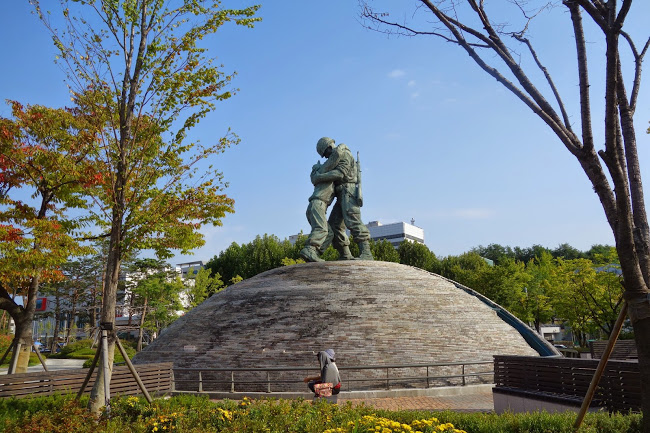
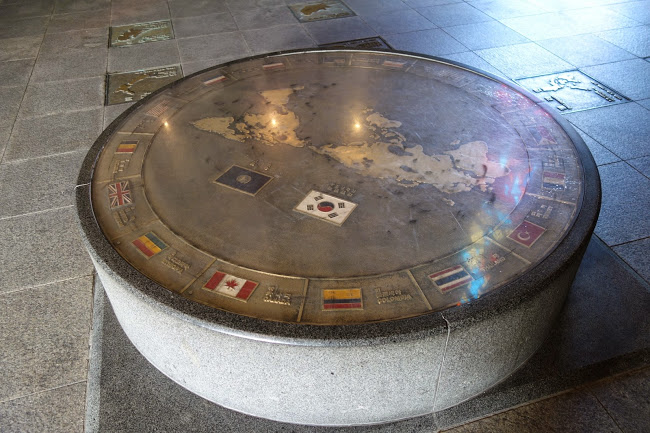
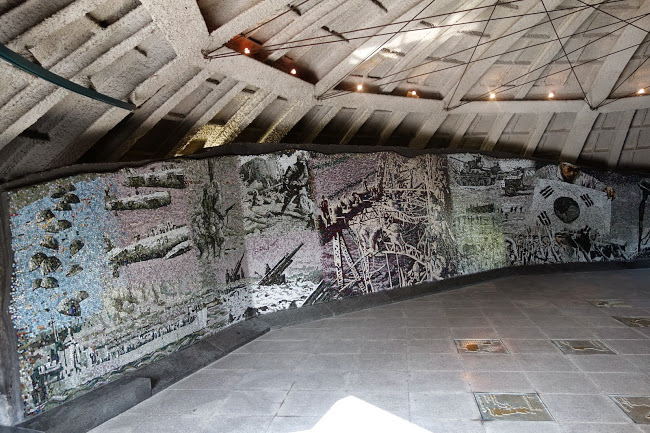
In the outer walls conducing to the main building, the names of each one of the allied forces member killed in action is written on black marble stones that sadly seems to go forever.

The memorial is also a very informative museum with exhibits both outside and inside of the main building. In different rooms they explain in deep the origins of the war, the role of the different countries involved before and after the hostilities ignited, the different phases of the conflict and finally the armistice process and the status quo.
The memorial offers also an outside exhibition with different war flying machines, tanks and ballistic missiles. They are an interesting sight, but I always try to keep in perspective what is the purpose of those military machines.
As with any history museum you have to take the message with a pinch of salt and remember it always will be one sided by default. I remember discussing this issue when I went to the Ho Chi Minh museum in Vietnam, where the message was clearly coming from a communist country. The contrast is very interesting.
2. Outside exhibition.
There is park in the ring around the main building. On the left side there are some statues such as the brothers in arms I described before, a flying machine sculpture and a clock tower. This one is interesting, because the Korean authorities hope to set this clock with the exact time when peninsula will be reunified.
On the right side of the building there is an extensive collection of fighters, bombers, and trainer aircrafts used before and during the Korean war, both by the ROK and the UN Allied forces and the DPROK and the Chinese. There are also tanks, ballistic missiles and even the replica of boat that was sunk in the Korean waters as recently 2002 (a chilling reminder that this war technically is not over).
It was interesting to see a B52 on real scale. I never imagined how massive was this aircraft:
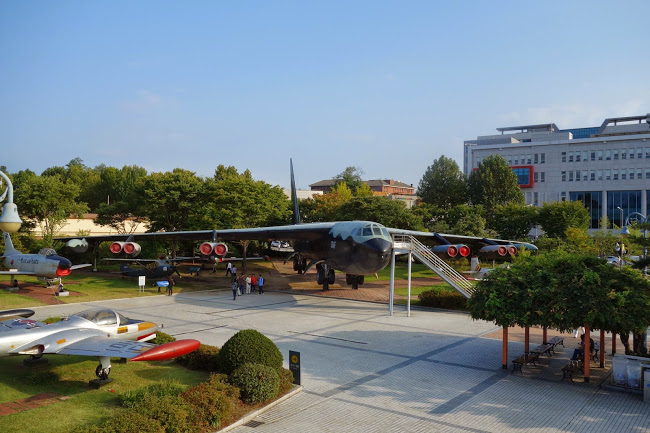
It was also interesting to see some of the ballistic missiles such as the Scud (that’s the one they were referring to in the news during the first Persian gulf war) and the missiles used to destroy those. There are also many other tanks, transportation vehicles etc.

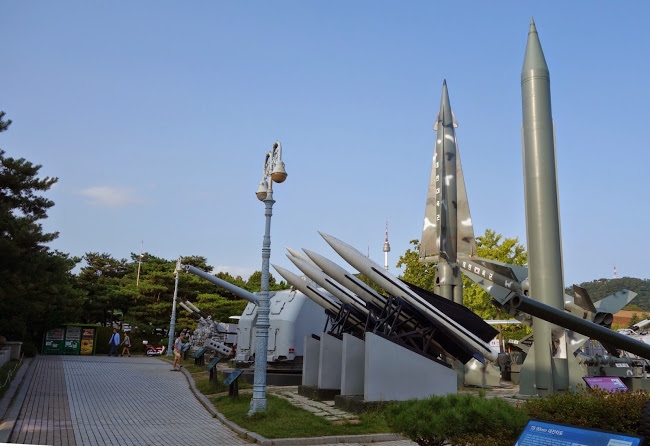
Again this is a very interesting exhibition if you think about the engineering behind it, but you have to forget for a moment that those machines are created to destroy and kill.
3. Inside exhibition.
I walked to the main building passing by the outer walls containing the names of the soldiers killed in action. Once I arrived to the main entrance I turned left and I started to visit the different rooms explaining the history of the Korean war.
The exposition takes you chronologically starting with the Japanese invasion at the beginning of the century, following by the rendition of Japan, division of the peninsula on the 38th parallel, the plan for elections and reunification, the invasion from the north with Chinese and Soviet support, the UN role and the intervention of its forces lead by the American army, the different phases of the war and finally the battles leading to the signing of the armistice of 1953.
The history was so fascinating that I got completely into it and I almost forgot to take pictures.
Still I managed to take the following shots:

A picture of the UN Security council meeting leading to the resolution condemning the invasion form the north.

The hat, glasses and pipes from the general McArthur, who play a pivotal role in turning the tide in the Korean war by executing the Incheon invasion.
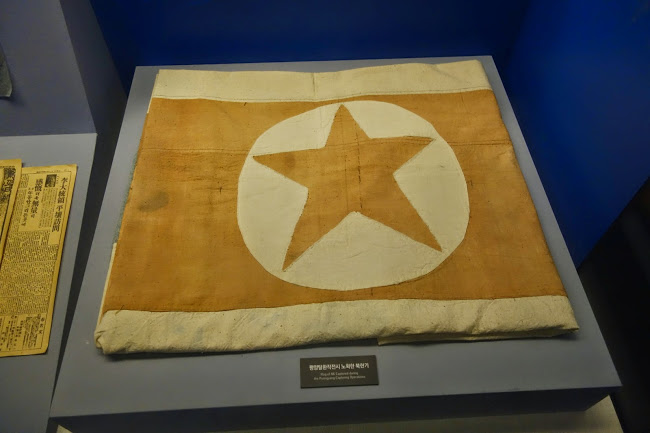
A North Korean flag taken by the allied forces when they captured Pyongyang (it was taken by the Chinese).
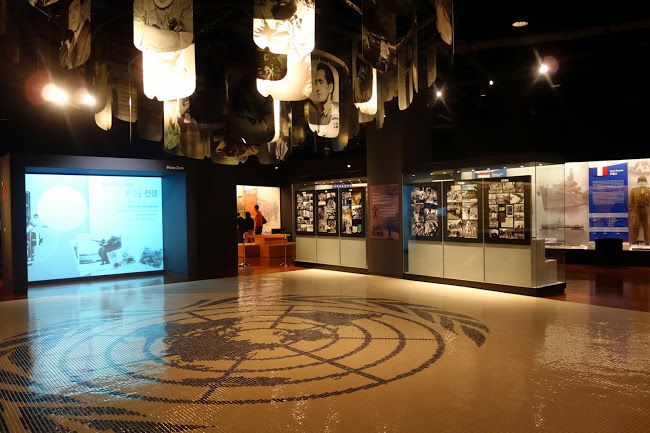
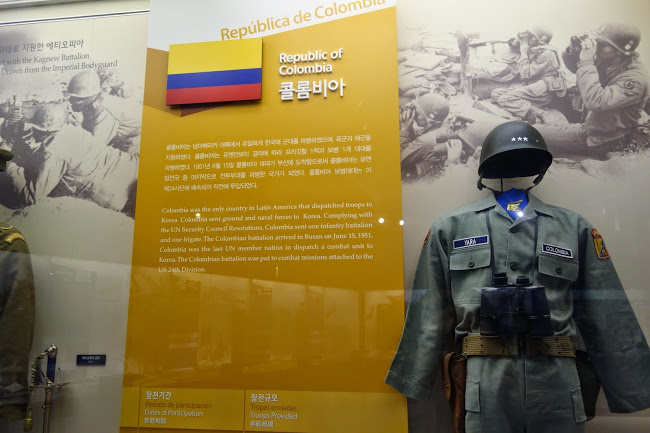
A United Nations hall with a detailed explanation of each one of the countries who participated on the war. Each display contains information about what battles they fought, how many people was injured or killed and a sample of their uniforms.
In conclusion this was a very interesting visit and if I have the time I will come back again to finish what I was not able to see (they close at 6pm).